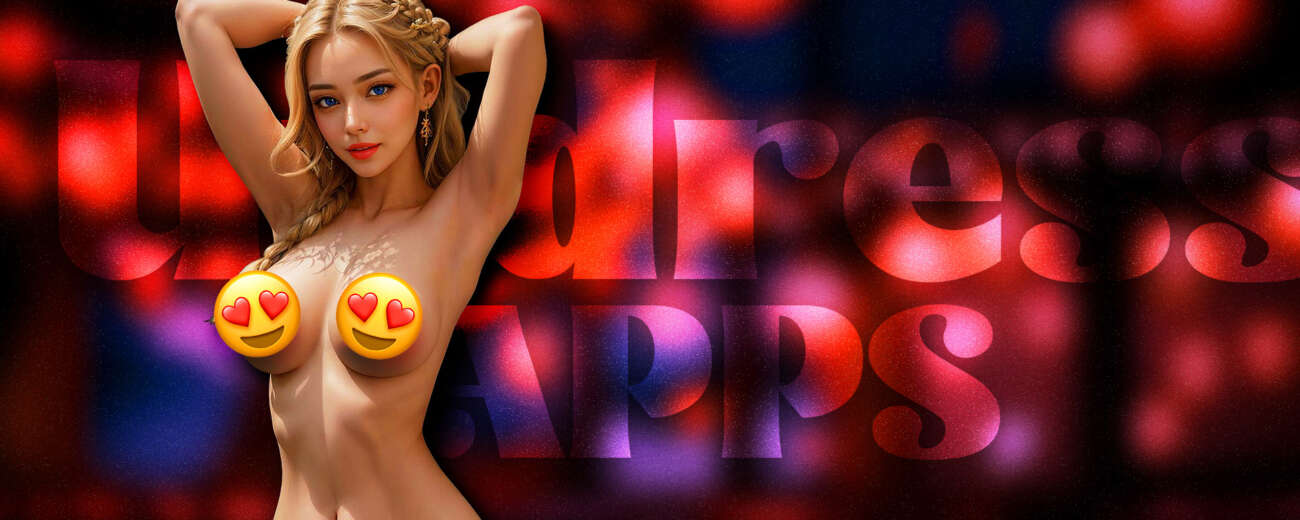Undress AI apps have quickly become a topic of intrigue, especially among those searching for undress apps on iOS and Android platforms. These apps, though not officially available in the App Store or Google Play, are often sought after for their ability to manipulate images using AI to simulate the removal of clothing. Despite the lack of legitimate undress apps for iPhone or Android, users continue to look for these tools, drawn by the promise of highly realistic and provocative image alterations.
The rise of this technology began with the infamous DeepNude app in 2019, which gained global attention for its ability to “undress” individuals in photos. While DeepNude was quickly shut down due to ethical and privacy concerns, the underlying technology persisted, leading to a proliferation of similar apps across various platforms. Though not found in mainstream mobile stores, these apps are accessible through third-party websites, targeting users on both iOS and Android devices.
The conversation around undress AI apps is complex, as it raises important questions about privacy, consent, and the ethical boundaries of artificial intelligence. In this article, we’ll explore the mechanics of these controversial apps, how they operate, and the broader implications for personal privacy and digital security—especially for mobile users on the hunt for undress apps for iPhone or Android devices.
📱 Check out the most popular Undress Apps for 2024
🤖 What Are Undress AI Apps?
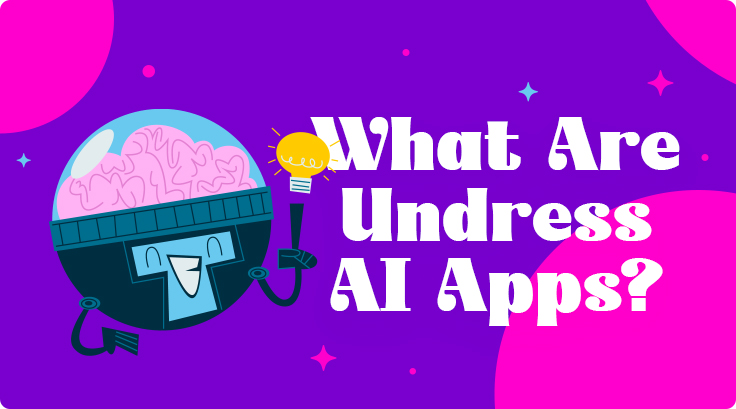 Undress AI apps are specialized software applications that use artificial intelligence to manipulate images by removing clothing from photographs of individuals. These apps rely on sophisticated machine learning algorithms, particularly deep learning models, to analyze images and create convincing alterations. Unlike traditional photo editing software, which requires manual adjustments, Undress AI apps automate the process, allowing users with minimal technical expertise to achieve complex image manipulation in just a few clicks.
Undress AI apps are specialized software applications that use artificial intelligence to manipulate images by removing clothing from photographs of individuals. These apps rely on sophisticated machine learning algorithms, particularly deep learning models, to analyze images and create convincing alterations. Unlike traditional photo editing software, which requires manual adjustments, Undress AI apps automate the process, allowing users with minimal technical expertise to achieve complex image manipulation in just a few clicks.
One defining feature of these apps is their use of Convolutional Neural Networks (CNNs), which are specifically designed for image recognition and processing tasks. These networks are trained on large datasets containing both clothed and unclothed images, enabling the AI to learn how to detect clothing and then “replace” it with a fabricated version of the human body. The AI’s ability to predict what the underlying skin and body structure might look like is what makes the output so convincing.
Though the initial surge in popularity came from the DeepNude app, which was quickly shut down, the technology behind these tools has continued to evolve. With improvements in AI, newer apps have become even more efficient, producing highly realistic images that are often indistinguishable from actual photographs. These developments have made Undress AI apps both more accessible and more controversial, especially in light of the potential for non-consensual image manipulation.
It’s important to note that while these apps are capable of generating realistic images, they also raise serious ethical questions. The ability to manipulate personal photos without consent highlights a troubling intersection of privacy and technology, making it clear that regulation and ethical guidelines need to evolve alongside these innovations.
⚙️ How Do Undress AI Apps Work?
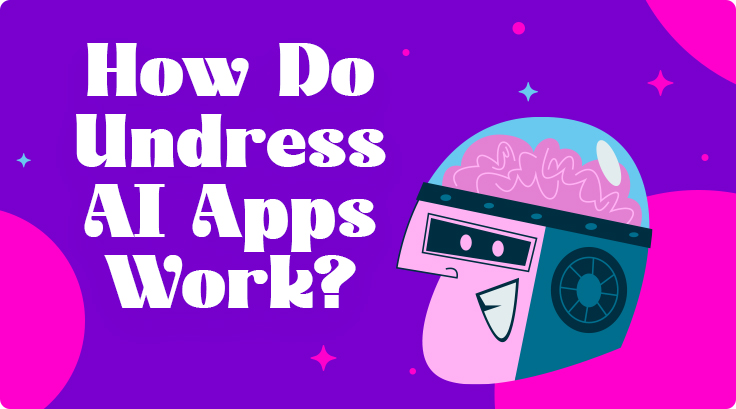 At the heart of Undress AI apps lies a powerful combination of deep learning algorithms and computer vision techniques that enable them to alter images in a highly realistic manner. These apps follow a multi-stage process to achieve their goal of removing clothing from an image while maintaining the realism of the underlying body and background. Here’s a breakdown of the key steps involved in how these apps work:
At the heart of Undress AI apps lies a powerful combination of deep learning algorithms and computer vision techniques that enable them to alter images in a highly realistic manner. These apps follow a multi-stage process to achieve their goal of removing clothing from an image while maintaining the realism of the underlying body and background. Here’s a breakdown of the key steps involved in how these apps work:
Step 1: Image Upload and Preprocessing
The process begins when a user uploads an image into the app. Before the AI can begin its manipulations, the image undergoes preprocessing. This step involves analyzing the image for features such as lighting, resolution, and content. The AI must detect the edges, contours, and features of the clothing and background to understand how to manipulate the image effectively.
Step 2: Image Analysis Using Deep Learning
Once the image is preprocessed, the core functionality of the app kicks in. The app uses Convolutional Neural Networks (CNNs), which are specialized for image processing tasks. CNNs are trained on large datasets containing both clothed and unclothed images. This training enables the AI to recognize patterns in clothing and body structure. The model identifies and segments the clothing from the rest of the image by detecting key characteristics like folds, shadows, and edges of the garments.
Step 3: Clothing Segmentation
After recognizing the clothing in the image, the AI proceeds to isolate it from the rest of the image using image segmentation techniques. This involves mapping out the boundaries of the clothing and separating it from the body and background. Segmentation is crucial because it allows the AI to differentiate between the clothing and the person’s body, ensuring that only the clothing is removed and the rest of the image remains intact.
Step 4: Inpainting and Image Reconstruction
Once the clothing is segmented, the AI uses inpainting techniques to digitally “remove” the clothing from the image. Inpainting refers to filling in missing or removed parts of an image with realistic content. In this case, the AI predicts and generates skin tones, body contours, and textures to replace the clothing, using the patterns it learned during its training on unclothed images.
Generative Adversarial Networks (GANs) are often used to enhance the realism of the output. GANs work by having two neural networks—one that generates new content and another that evaluates its realism—work together to improve the quality of the reconstructed image. This ensures that the generated image appears as natural as possible.
Step 5: Maintaining the Integrity of the Original Image
One of the unique aspects of Undress AI apps is their ability to keep the original image untouched while generating a separate, altered version. By working on different layers of the image—one containing the background and the other containing the clothing—the AI ensures that only the clothing is altered while the rest of the image remains intact. This layering technique ensures that the generated image can be reverted to the original state without any loss of data, should the user choose to do so.
Step 6: Final Image Output
The final step involves outputting the altered image. Depending on the quality of the input image and the complexity of the clothing, the final product may vary in terms of realism. Higher-quality input images typically yield more convincing results, while images with complex, multi-layered clothing may pose challenges for the AI.
This automated process stands in stark contrast to traditional image-editing software, where such alterations would require significant manual effort and expertise. Undress AI apps leverage the power of deep learning to simplify and automate the process, making it accessible to users with minimal technical skills.
🌟 Popular Undressing AI Apps
Undressing AI
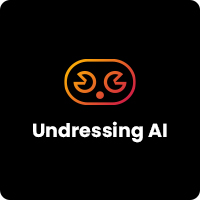 Undressing AI is a robust AI tool designed for removing clothing from images with speed and precision. The platform is accessible online and offers a free trial for users to test the service. The premium plan, which starts at $19.99/month, unlocks faster processing times and higher-quality outputs for more advanced needs.
Undressing AI is a robust AI tool designed for removing clothing from images with speed and precision. The platform is accessible online and offers a free trial for users to test the service. The premium plan, which starts at $19.99/month, unlocks faster processing times and higher-quality outputs for more advanced needs.
The app is known for its ease of use and efficient image manipulation capabilities. Users can personalize their outputs by adjusting body type and other features, making it a versatile tool for various use cases. With a focus on privacy, Undressing AI ensures that no images are stored after processing, making it a safe option for users concerned about data security.
Key Features:
- Fast, precise image manipulation
- Free trial with paid plans for premium features
- Customization options for personalized results
- Pricing: Premium starts at $19.99/month
NudeItNow
 NudeItNow offers a web-based platform for removing clothing from images using AI. The platform provides both free and premium options, allowing users to explore its features before committing to a subscription. With a focus on fast image processing, NudeItNow is ideal for users who need quick results with minimal effort.
NudeItNow offers a web-based platform for removing clothing from images using AI. The platform provides both free and premium options, allowing users to explore its features before committing to a subscription. With a focus on fast image processing, NudeItNow is ideal for users who need quick results with minimal effort.
The app’s ease of use makes it accessible for all skill levels, and the customization options enable users to tweak images based on specific preferences. Privacy is a core feature, as NudeItNow guarantees that no images are stored after processing. Premium plans start at $5.99/month, offering faster speeds and enhanced features for more advanced users.
Key Features:
- Web-based platform with fast processing times
- Customization options for detailed image editing
- Free plan available, with premium features for advanced users
- Pricing: Premium starts at $5.99/month
AI Nudes
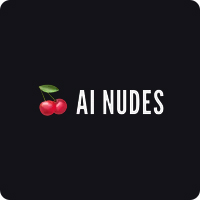 AI Nudes is an AI-powered platform that allows users to remove clothing from images. It is built with advanced machine learning algorithms to deliver fast and accurate results. The platform is easy to use, with a free trial and paid plans for users looking for more advanced features. It is primarily known for its ability to process images quickly while maintaining a high level of realism.
AI Nudes is an AI-powered platform that allows users to remove clothing from images. It is built with advanced machine learning algorithms to deliver fast and accurate results. The platform is easy to use, with a free trial and paid plans for users looking for more advanced features. It is primarily known for its ability to process images quickly while maintaining a high level of realism.
One of the key selling points of AI Nudes is its customization options, which allow users to adjust the final output based on body type, skin tone, and other factors. The platform ensures that no images are stored after processing, providing peace of mind to users concerned about privacy. Premium plans start at $9.99/month, offering faster processing and higher quality results.
Key Features:
- Fast image processing with realistic outputs
- Customization features for personalized results
- Free trial and premium plans available
- Pricing: Premium starts at $9.99/month
💻 Technology Behind Undress AI Applications software
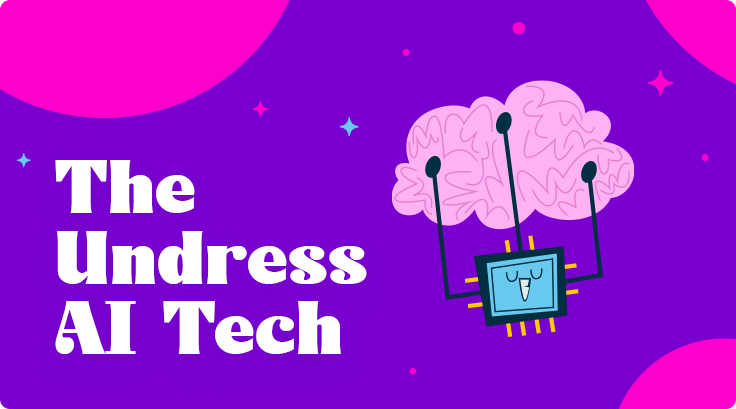 Undress AI apps rely on some pretty smart technology to pull off their tricks, but we can break it down into simpler terms by comparing the process to things we use every day.
Undress AI apps rely on some pretty smart technology to pull off their tricks, but we can break it down into simpler terms by comparing the process to things we use every day.
Deep Learning (Like Learning from Thousands of Photos)
Think of deep learning as a person who looks at thousands of photos of people wearing clothes and without clothes. Over time, this person becomes really good at recognizing patterns—like how clothes fit on the body, what skin looks like underneath, and even how different people’s bodies are shaped. In the same way, Undress AI uses deep learning to “learn” how to spot clothes in photos and predict what the body underneath might look like.
Imagine you’re trying to guess what’s under a blanket without seeing it—you get better at guessing the more you do it. That’s how deep learning works here: it guesses based on what it has learned from many examples.
Convolutional Neural Networks (CNNs) – Like Spotting Differences in a Puzzle
A Convolutional Neural Network (CNN) is a type of AI that’s really good at looking closely at pictures, kind of like when you play a “spot the difference” game. In this case, the CNN looks for the lines and edges in a photo that separate the clothes from the body, just like you’d find the outlines of objects in a puzzle. Once it knows where the clothes start and end, it helps the app figure out how to remove the clothing from the picture without affecting the rest of the image.
Think of it like tracing the lines of a drawing—once you trace the clothing, it’s easy to know what parts to color in differently or remove.
Generative Adversarial Networks (GANs) – Like Two Artists Competing to Make a Realistic Drawing
Here’s where Generative Adversarial Networks (GANs) come in. Imagine two artists: one draws a picture of a person, and the other judges whether it looks like a real person or not. If the judge says, “That doesn’t look right,” the first artist tries again, making the drawing better each time. This back-and-forth helps the artist improve until the drawing looks just like a real person.
That’s exactly what happens with GANs in Undress AI. One part of the AI tries to create a realistic version of the unclothed body, while another part checks if it looks real. They “compete” until the generated image is convincing enough.
Inpainting and Texture Synthesis – Like Filling in Missing Pieces of a Puzzle
Now, imagine you have a puzzle with missing pieces. Inpainting is like magically filling in those missing pieces so that everything looks complete. When Undress AI removes clothing, it needs to “fill in” the empty space where the clothes were. To do that, it uses inpainting, which helps it add skin tones, shadows, and other details.
Texture synthesis is like when you match colors or patterns on a fabric to patch a hole. The AI looks at other parts of the image (like the face or arms) to figure out the right skin tone or texture for the parts it is generating, making the altered photo look smooth and natural.
🖼️ Undressing AI Aps vs Other AI and Image Processing Programs
Undress AI apps are highly specialized in what they do—removing clothing from images and generating fabricated results—but to understand their unique functionality, it’s helpful to compare them with other types of AI-driven image processing tools. Here’s how Undress AI apps differ from some of the more commonly known AI tools in creative and industrial applications.
Let’s compare:
|
Software |
User Control |
Ethics |
Skills |
Purpose |
Privacy |
|
Undress AI Apps |
Minimal |
Low |
Minimal |
Manipulation |
High |
|
DALL-E |
Full |
High |
Minimal |
Creation |
Low |
|
Adobe Photoshop |
Full |
High |
High |
Editing |
Low |
|
MidJourney |
Full |
High |
Minimal |
Creation |
Low |
|
Deepfake Tools |
Some |
Varies |
Moderate |
Manipulation |
High |
Now, let’s dive a bit deeper and find out how each of those technology compares to the undressing AI technology:
Deepfake Technologies
Deepfake technology shares some similarities with Undress AI apps, particularly in its use of Generative Adversarial Networks (GANs). However, while deepfakes are typically used to swap faces in videos or images, Undress AI is focused solely on removing clothing. The key difference lies in the end goal: deepfakes aim to create convincing video or image content with swapped faces, often for entertainment or political manipulation, whereas Undress AI tools primarily manipulate images to create explicit content.
Key Difference: Deepfake tools manipulate faces, while Undress AI manipulates clothing.
Artistic AI Tools (e.g., MidJourney, DALL-E)
Creative tools like MidJourney and DALL-E use AI to generate entirely new artistic content from scratch based on text prompts. These tools can produce anything from abstract art to hyper-realistic images, but they are strictly ethical and focused on user-generated creativity. Unlike Undress AI apps, which use existing photos to create manipulated content, these apps create new images without altering or violating anyone’s personal data.
Key Difference: MidJourney and DALL-E create new images ethically, while Undress AI apps alter existing photos, often raising privacy concerns.
Photo Editing Software (e.g., Photoshop)
Traditional photo editing software like Photoshop requires manual manipulation of images. To achieve what Undress AI does automatically, a user would need advanced skills to remove clothing, reconstruct body parts, and ensure the final image looks realistic. Photoshop provides full control over the editing process but takes considerably more time and expertise compared to the automated process of Undress AI apps.
Key Difference: Photoshop relies on manual, skillful editing, while Undress AI automates the process, making it faster but riskier in terms of privacy.
Fashion and Virtual Fitting AI
Fashion brands are increasingly using virtual fitting room technologies, which allow customers to see how clothes would look on their bodies without physically trying them on. This technology shares some surface-level similarities with Undress AI in how it detects body shapes and layers clothing over them, but the key distinction is that virtual fitting rooms enhance user experience in retail without compromising privacy or consent.
Key Difference: Fashion AI is used to enhance shopping experiences and respect privacy, while Undress AI apps exploit images without consent for different purposes.
Healthcare AI (e.g., Radiology)
AI in healthcare often uses similar image processing techniques to analyze medical scans and help doctors identify conditions like tumors. AI models used in radiology employ deep learning to scan and reconstruct images for diagnosis, which echoes the image analysis and inpainting techniques used by Undress AI. However, healthcare AI serves an ethical and essential purpose, aiming to save lives rather than manipulate personal images.
Key Difference: Healthcare AI is designed for medical advancements and ethical purposes, whereas Undress AI is used for potentially harmful image manipulation.
❗ Undress AI Apps Ethical and Legal Concerns
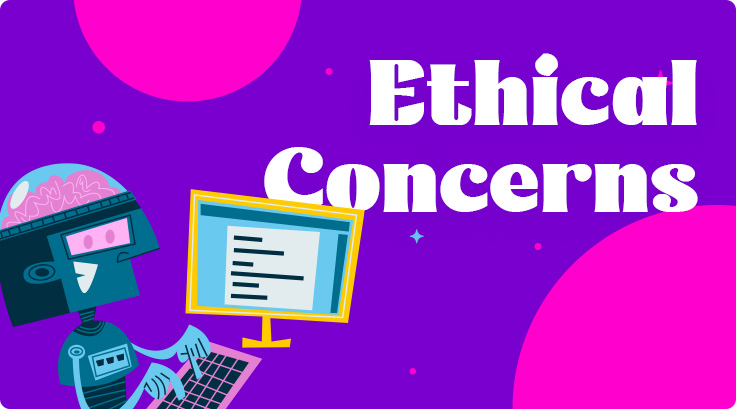 The rapid development of Undress AI apps has sparked significant ethical and legal debates, as these tools challenge traditional boundaries of privacy, consent, and personal safety. While AI technologies offer exciting possibilities, Undress AI apps present unique risks due to their ability to generate non-consensual, explicit content that can harm individuals emotionally, socially, and professionally. Understanding the ethical and legal issues surrounding these apps is essential to addressing their potential misuse.
The rapid development of Undress AI apps has sparked significant ethical and legal debates, as these tools challenge traditional boundaries of privacy, consent, and personal safety. While AI technologies offer exciting possibilities, Undress AI apps present unique risks due to their ability to generate non-consensual, explicit content that can harm individuals emotionally, socially, and professionally. Understanding the ethical and legal issues surrounding these apps is essential to addressing their potential misuse.
Ethical Concerns
At the heart of the ethical concerns surrounding Undress AI apps is the issue of consent. These apps allow users to manipulate images of others, often without their knowledge or approval, resulting in fabricated explicit content. The ease of access to these tools enables individuals to exploit others for personal gain, leading to significant privacy violations. This lack of consent is particularly damaging because the altered images can be shared widely across social media platforms or the dark web, causing long-lasting harm to the individuals depicted.
These apps disproportionately affect vulnerable groups, particularly women, minors, and marginalized communities, who are often targeted for exploitation. The creation of non-consensual content can lead to harassment, blackmail, and emotional distress for the victims, further perpetuating gender inequality and digital exploitation. The ethical concerns extend beyond individual harm, raising questions about the responsibility of developers and society in managing the potential misuse of AI technology.
Another significant ethical issue is the normalization of image manipulation. As these tools become more widely available, there is a risk that society may become desensitized to the consequences of non-consensual image alteration, further blurring the lines between what is considered acceptable or harmful in digital spaces.
Legal Concerns
Legally, Undress AI apps operate in a largely unregulated space, and existing laws have been slow to catch up with the capabilities of this technology. However, many jurisdictions are beginning to recognize the dangers posed by AI-driven image manipulation and are working to enact legislation to protect individuals from its misuse.
Several countries and states have passed laws targeting non-consensual explicit content and deepfakes. For instance, in the United States, states like California and Texas have introduced specific laws that criminalize the distribution of deepfake pornography. These laws impose fines or jail time on individuals found guilty of creating or sharing non-consensual deepfake images. However, enforcement remains a challenge, especially given the global nature of the internet, where images can be shared across borders and hosted on anonymous platforms.
The European Union (EU) is also taking steps to address AI-related privacy violations. With the implementation of the General Data Protection Regulation (GDPR), individuals have the right to demand the removal of their personal data—including images—if they are used without consent. However, the complexity of AI-generated content raises new legal questions about what constitutes “personal data” and how AI-generated images should be treated under these regulations.
Additionally, international collaboration will be essential to effectively combat the spread of non-consensual content created by Undress AI apps. Many of these apps are hosted on platforms outside the jurisdiction of affected individuals, making it difficult for victims to seek justice. Regulatory frameworks must evolve to ensure that developers of these tools are held accountable and that there are clear legal consequences for their misuse.
📝 Final Words
The rise of Undress AI apps demonstrates both the immense potential and the serious risks that come with advancements in artificial intelligence. While AI technology has opened up new possibilities in fields like art, fashion, and healthcare, its misuse—particularly in applications like Undress AI—highlights the importance of ethical boundaries and legal frameworks. These apps present significant challenges in terms of privacy violations, non-consensual image manipulation, and the exploitation of vulnerable groups, sparking urgent conversations about how society should manage such technologies.
It’s clear that the problem lies not in the technology itself but in how it’s applied. Much like any powerful tool, Undress AI apps can be used responsibly in creative and productive ways, or they can be exploited for harmful purposes. The challenge moving forward is ensuring that regulatory bodies, developers, and users alike act with responsibility and integrity, placing safeguards around the technology to prevent abuse.
❓ Common Questions about Undress AI Apps
What are Undress AI apps used for?
These apps use AI to digitally remove clothing from images, often resulting in non-consensual explicit content.
Are Undress AI apps legal?
It depends on the country. In many places, creating or sharing non-consensual explicit images is illegal, and these apps may fall under those laws.
Can Undress AI apps be used for positive purposes?
While primarily controversial, the underlying technology could be adapted for ethical uses like fashion design or virtual fitting rooms.
How do Undress AI apps work?
They use deep learning, CNNs, and GANs to analyze and manipulate images, removing clothing while reconstructing body features.
What are the ethical concerns with Undress AI apps?
The main concerns include privacy violations, non-consensual image creation, and potential exploitation of vulnerable groups.
Can Undress AI apps be detected?
Yes, there are tools available that can detect AI-generated manipulations in images by analyzing inconsistencies.
What should I do if I find an image of myself altered by Undress AI?
Report the image to the platform hosting it and seek legal advice, especially if it’s a case of non-consensual explicit content.
How are governments addressing the issue of Undress AI apps?
Some governments have passed laws criminalizing non-consensual deepfake and explicit content, but enforcement is challenging.
Are there alternatives to these apps for legitimate uses?
Yes, other AI tools like DALL-E and fashion virtual fitting apps offer ethical applications without violating privacy.
Is it possible to remove AI-generated explicit content from the internet?
It’s difficult to completely remove content once shared, but reporting and legal action can help in some cases.
⚖️ PROs & CONs
👍 PROs
- Can be used in artistic projects for digital manipulation.
- Potential for virtual try-ons in the fashion industry.
- Contributes to innovation in machine learning and image processing.
- Helps in understanding AI ethics and image processing technology.
👎 CONs
- Creates explicit content without consent.
- Can be misused for harassment or blackmail.
- Inadequate legal frameworks to address misuse.
- Risks normalizing unethical image manipulation.
- Hard to enforce laws due to anonymous platforms.

